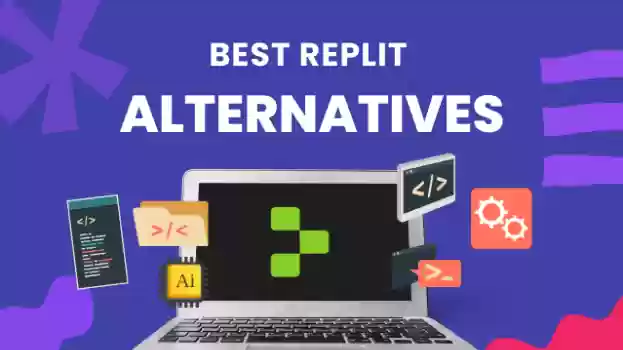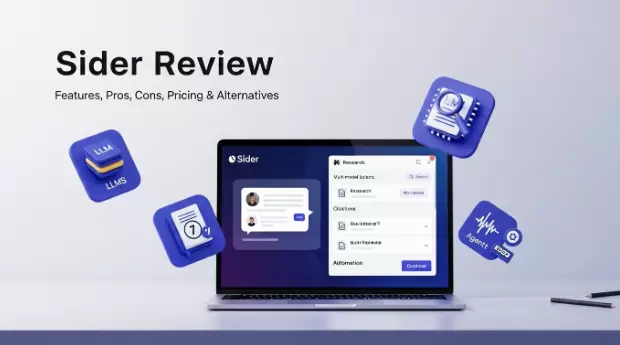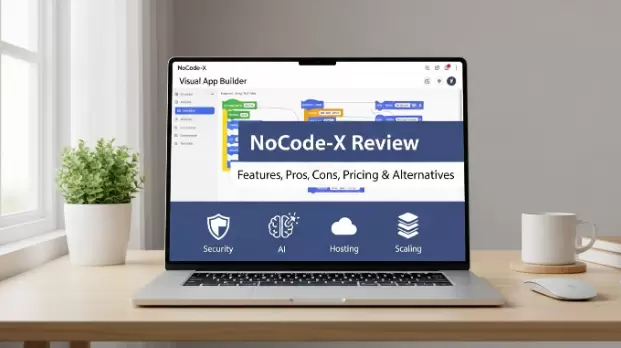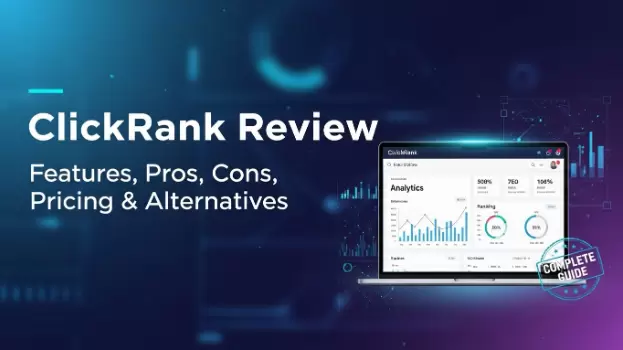Replit AI has become a well-liked tool for quickly developing and delivering code. Developers and beginners alike are attracted to it, which is not surprising given the cloud-based IDE, Ghostwriter AI assistant, and easy deployment abilities.
However, what if you're looking for tools that provide more than code completion, a new interface, or greater power? Replit AI alternatives are becoming more and more popular in 2025; these technologies enable developers to create apps more quickly, intelligently, and frequently at a lower cost.
The following list will guide you to the best choices whether you're searching for a full-stack generator, an AI code explanation, or a pair programmer. Below are the Top 10 Replit AI Alternatives which will be worth to explore this year:
What to Look for in Replit Alternatives
Picking the right development platform doesn't have to be overwhelming. Here's what you should actually care about:
Ease of Use: Nobody wants to spend weeks learning to use their development environment. Pick one where you feel like a natural of yourself on day one — simple designs, menus, and maybe some helpful tutorials to get you going. If you're fighting the interface instead of writing code, it's not the right fit.
Language and Framework Support: This one's pretty obvious — make sure it actually works with whatever you're coding in. But here's the thing: also think about what you might want to learn next. Today you're doing React, but what if you want to try Python next month?
Performance and Stability: Life is too short to waste sitting around waiting for slow compiles or with platforms that crash every other day. You need something that boots up quickly, runs well, and doesn't choke when your project gets large. You'll thank me when you're on a deadline.
Integration Capabilities: Your dev environment doesn't have to exist in a vacuum. It needs to be able to coexist with GitHub, your deployment environment, your database, and whatever else you've got in your workflow. The fewer places you have to copy-paste code, the better.
Pricing Structure: Let's talk money. Figure out what you can actually afford, and don't forget to factor in growth. That free tier might be perfect now, but what happens when you need more features? Also, if you're working with a team, those per-user costs can add up fast.
AI and Automation Features: This is where things get interesting. AI code completion isn't just hype anymore — it genuinely makes you faster. Some platforms can even write entire functions for you or catch bugs before you do. It's like having a really smart coding buddy.
Deployment Options: You've built something awesome — now you need to get it online. Look for platforms that make deployment dead simple, whether you're going with Vercel, AWS, or just need to generate static files. The easier the deployment, the more time you can spend actually coding.
Reviews of the Best Replit Alternatives
1. Cursor IDE
Best for: Professional Developers & AI-Powered Development
Brief Overview: Cursor IDE is the next generation of AI-powered development environments. It comes as a Visual Studio Code fork, embedding natively the leading AI features under development to deliver intelligent code completion on refactoring and context-aware suggestions for further enhancing developer productivity.
Key Features:
- AI-powered code completion with GPT-4 integration
- Natural language code generation and editing
- Advanced diff suggestions and code explanations
- Integrated chat for coding questions and debugging
Pricing: Hobby Plan (Free) with limited completions and 50 requests monthly, Pro Plan at $20/month, and Ultra Plan at $200 per user monthly
Pros:
- Exceptional AI integration for faster development
- Familiar VS Code interface with enhanced capabilities
- Powerful code suggestion and completion features
Cons:
- Token costs can escalate quickly with heavy usage
- Requires stable internet connection for AI features
- Learning curve for maximizing AI capabilities
2. Bolt.new
Best for: Rapid Prototyping & Full-Stack Web Applications
Brief Overview: Bolt.new, is an AI-powered web app builder built by the StackBlitz team, aims to redefine that how developers tackle building applications by making the process more quickly and effortless.
Key Features:
- Support for popular frameworks including Astro, Vite, Next.js
- AI-powered application generation from text prompts
- WebContainers technology for secure, fast development
- Integration with modern JavaScript ecosystem
Pricing: Free daily tokens to get started, with upgrade options for continued access and Pro plan normally priced at $20/month
Pros:
- Incredibly fast prototyping capabilities
- No setup required for popular frameworks
- AI-driven development workflow
Cons:
- Token-based pricing can become expensive for complex projects
- Limited to web-based applications
- Doesn't provide much backend support
- Dependency on AI services for core functionality
3. GitPod
Best for: Teams & Open Source Development
Brief Overview: GitPod provides automated, code-ready dev environments that boot new, pre-configured dev environments for any project in seconds. It's particularly popular among open-source projects and teams that value reproducible development setups.
Key Features:
- Automated dev environment provisioning
- VS Code and Theia IDE support
- Docker-based workspace configuration
- GitHub, GitLab, and Bitbucket integration
Pricing: Free tier with 50 hours monthly, personal plans starting at $9/month, team plans with custom pricing
Pros:
- Excellent integration with version control
- Highly configurable workspace environments
Cons:
- Can be complex to configure initially
- Limited free tier hours
- Performance depends on internet connection
4. StackBlitz
Best for: Frontend Development & JavaScript Projects
Brief Overview: StackBlitz is a standard web-container-based online IDE that you can actually run full Node.js environments in the browser. It’s very good for front-end development, and JavaScript projects, because it has hot reloading and real-time NPM package support.
Key Features:
- WebContainers for running Node.js in browser
- Instant hot reloading and fast refresh
- Full NPM ecosystem support
- Real-time collaboration features
- GitHub integration and deployment
- Offline development capabilities
Pricing: Free tier, Pro plans starting at $18/month for enhanced features
Pros:
- Extremely fast startup and execution
- No server-side infrastructure needed
- Excellent for frontend development
- Strong framework integration
Cons:
- Only works in the JavaScript/Node.js ecosystem
- Not suitable for backend-heavy applications
- Limited customization compared to full IDEs
- Performance limitations with very large projects
5. CodeSandbox
Best for: Frontend Prototyping & Component Development
Brief Overview: CodeSandbox is an excellent choice for rapid prototyping and front-end development with an easy-to-use coding and sharing environment for web applications.
Key Features:
- Instant code sharing and embedding
- Live collaboration and commenting
- Extensive template library
- NPM package integration
Pricing: Free tier with limitations, Pro plans starting at $12/month
Pros:
- Excellent for rapid prototyping
- Strong community and template ecosystem
- Easy sharing and collaboration
Cons:
- Primarily focused on frontend development
- Limited backend capabilities
- Can be slow with large applications
- Restricted customization options
6. Qodo Gen (formerly Codium AI)
Best for: AI-Assisted Code Generation & Testing
Brief Overview: Qodo Gen is an expert in AI-driven code generation and auto-testing, helping developers write more efficient code faster with intelligent recommendations and complete test generation.
Key Features:
- AI-powered code generation and completion
- Automated test case generation
- Code explanation and documentation
- Multi-language support
- IDE integrations (VS Code, JetBrains)
Pricing: Free tier available, paid plans for advanced features starting at $38/user per month
Pros:
- Strong AI capabilities for code generation
- Excellent test automation features
- Good IDE integration
- Security-focused features
Cons:
- Primarily an AI assistant rather than full IDE
- Requires existing development setup
- Limited standalone capabilities
7. Sourcegraph Cody
Best for: Enterprise Development & Code Intelligence
Brief Overview: Sourcegraph Cody is an AI powered coding assistant that offers smart code completion, explanations and search over your entire codebase, especially useful for large enterprise codebases.
Key Features:
- AI-powered code completion and generation
- Universal code search across repositories
- Code intelligence and navigation
- Automated code explanations
- Enterprise security and compliance
Pricing: Enterprise Starter plan start from $19 per user/month
Pros:
- Excellent for large codebases
- Strong enterprise features
- Comprehensive code search capabilities
Cons:
- Primarily enterprise-focused
- Complex setup for full features
- Limited standalone development environment
8. CodeRabbit
Best for: Code Review & AI-Powered Analysis
Brief Overview: CodeRabbit helps you to maintain code quality among your development teams!! CodeRabbit is an AI that reviews and analyses code found in pull-request comments.
Key Features:
- AI-powered code review automation
- Pull request analysis and suggestions
- Security vulnerability detection
- Code quality metrics and insights
- Team collaboration features
Pricing: Free tier for open source, paid plans starting at $12/month per user
Pros:
- Excellent code review capabilities
- Strong security analysis features
- Good team collaboration tools
Cons:
- Not a full development environment
- Requires existing Git workflow
- Limited standalone coding capabilities
- Focused primarily on review rather than creation
9. JSFiddle
Best for: HTML, CSS, and JavaScript
Brief Overview: JSFiddle is a minimal online editor to test with (HTML, CSS, and JavaScript). Very straightforward for quick tests, debugging and sharing code examples.
Key Features:
- Simple three-panel interface (HTML, CSS, JS)
- Instant preview and execution
- Easy code sharing via URLs
- Popular JavaScript library integration
- Collaborative editing features
Pricing: Free with ads, Pro subscription available for $8/month
Pros:
- Extremely simple and fast to use
- Perfect for quick testing and demos
- No account required for basic use
Cons:
- Very limited functionality
- No multi-file project support
- Limited framework support
10. Koding
Best for: Full-Stack Development Teams
Brief Overview: Koding provides complete Linux VMs with an online IDE for quickly developing server software. Best for teams that require complete control over their development stack and infrastructure.
Key Features:
- Full Linux virtual machines
- Team collaboration and workspace sharing
- Multiple IDE options (Terminal, VS Code)
- Custom domain and SSL support
- Database and service integration
Pricing: Koding offers a free version, but their website does not provide specific pricing details.
Pros:
- Full control over development environment
- Supports any programming language or framework
- Good team collaboration features
Cons:
- More complex setup compared to specialized tools
- Higher resource usage and costs
- Requires more technical knowledge
- Less beginner-friendly interface
11. Ask Codi
Best for: AI-Powered Coding Assistance & Learning
Brief Overview: Ask Codi is an AI-powered co-pilot for coding that helps developers compose, debug and understand code in a natural language. This platform is especially useful when learning.
Key Features:
- Natural language to code generation
- Code explanation and documentation
- Debugging assistance and error resolution
- Multi-language programming support
- IDE extensions and integrations
Pricing: 7 Days Free tier available, premium plans starting at $14.99/month
Pros:
- Great for learning and skill development
- Natural language interface
- Helpful debugging capabilities
Cons:
- Not a complete development environment
- Requires existing IDE setup
- Limited project management features
- Dependency on AI service availability
How to Choose the Best Replit Alternative
Choose the correct dev platform for your requirements and situation. Here is how to ensure you make the best decision:
Requirements and Budget: The first step is to decide what type of features you require from the IDE. This will be derived from the programming languages you are using, the type and complexity of your project(s), working with a team or going it alone, your budget, etc. Each platform has very different strengths, so it's important to know what is most important to you.
Use Free Trials and Demos: Take Advantage of Free Trials and Demos! A lot of platforms will allow you to use their free tiers or trial periods. Take advantage of these to test the actual development experience.
Test Performance with Real Projects: If possible, try building or importing a real project to test performance, compilation speed, and overall responsiveness under realistic conditions.
Conclusion
Today’s cloud-based development environments have an endless options and power. With IDEs powered by AI (Cursor IDE, Bolt.new), specific IDEs (GitPod for team work, StackBlitz for frontend work), there is the right solution for all developer needs.
In reviewing the alternatives to Replit, the key is knowing your clear goals, whether you need something for rapid prototyping, team collaboration, AI support, or specific language support. Each of the platforms we reviewed had specific and unique strengths for particular development needs and workflows.
So, are ready to dive deeper into the world of online development platforms? If you want to know more about the platform that started it all, read our full Replit Review 2025: Key Features, Pricing, and Alternatives. You'll also see how it stacks up against these newer options.
Frequently Asked Questions (FAQs)
Q: Are cloud-based IDEs as powerful as desktop development environments?
A: Yes, these days' technology has evolved so much where you can do almost everything that you used to accomplish on a desktop. Sure, if you're working with massive projects or doing some really low-level system stuff, you might hit some walls. But honestly, the perks are huge — you can start coding instantly without installing anything, work from anywhere, and easily share your work with others.
Q: How secure are online development environments for sensitive projects?
A: The good platforms always focus on safety — they tend to encrypt everything keep all your data workloads in containers, create proper firewalls between other users and follow all sop's of the industry.
But if you're dealing with super sensitive works, always absolutely go for self-hosted or enterprise-level security platforms. Their public security documents are useful guides before jumping in and check out first always.
Q: Can I use these platforms for backend development and databases?
A: Of course! You can use GitPod, Koding, and other similar services to manage databases and do backend development, but whether or not they are right for your project depends on how complicated it is and what it needs. Some platforms have strong backend and database features, while others may be better for simpler apps or for learning.
Q: What happens to my code if the platform goes down or shuts down?
A: Don't worry — the reputable platforms let you download your code and usually connect directly to GitHub or similar services. The smart move is to always keep your code backed up in places like GitHub anyway. Most platforms actually do this automatically, so your code is safe even if something goes wrong.
Q: Are these platforms suitable for team development and collaboration?
A: Yes! This is one of the coolest features. You can see your teammates type live, make comments on code, and share workspaces. It is like Google Docs for coding! Platforms like GitPod and CodeSandbox are especially good at this team collaboration stuff.
Q: How do AI-powered coding assistants compare to traditional autocomplete?
A: They're on a completely different level! While regular autocomplete just finishes your words, AI assistants like the ones in Cursor and Bolt.new can write entire functions, explain confusing code, suggest better ways to organize things, and even build apps just from describing what you want. The catch is you need internet, and you might have to pay based on how much you use them.
Q: Can I migrate my existing projects to these platforms easily?
A: Pretty easy, actually! Most services can pull your projects straight from GitHub or wherever else you keep your code, and several even have one-click import options for specific setups. Unless your project is really unusual, hooking up your GitHub account and choosing what to bring in is usually all it takes.


 Table of Content
Table of Content










